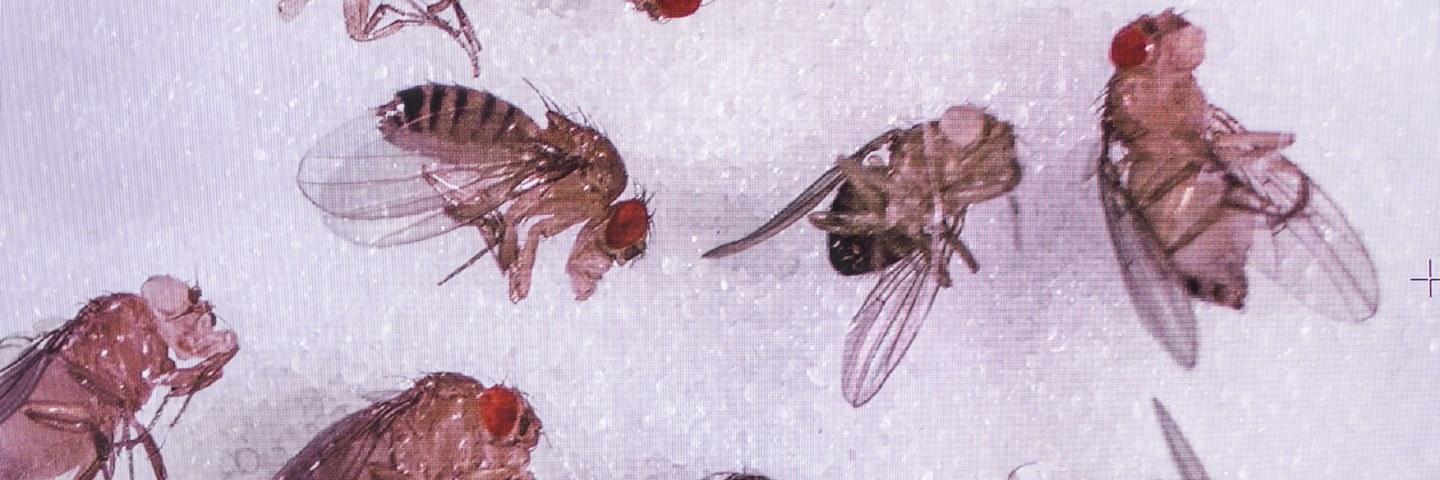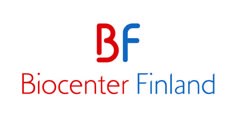
Drosophila Facility

Introduction
Tampere Drosophila facility promotes the use of the model organism Drosophila melanogaster, or the common fruit fly, in life sciences. Drosophila is easy and inexpensive to rear in the laboratory, produces numerous progeny and has a short (about 10 d) generation time. As an invertebrate, Drosophila is an ethically ideal animal model.
Drosophila is an extremely useful tool for studying various biological processes. The Drosophila genome has low redundancy; single mutants are likely to reveal phenotypes of interest. Moreover, there is a high degree of conservation of a very large number of biological processes between flies and mammals, and 75% of known human genetic disease genes have homologues in the fly.
The major advantage of flies is the simplicity and scale for genetic analysis. Many molecular genetic techniques, including RNA interference (RNAi), have been developed in the last few decades. Mutants, transgenic lines and other tool lines are available from stock centers such as the Bloomington Drosophila Stock Center (BDSC) and the Exelixis Collection at the Harvard Medical School. RNAi fly lines based on the binary GAL4/UAS system are available commercially from several centers including Vienna Drosophila RNAi center (VDRC), the NIG-FLY (National Institutes of Genetics, Japan) and the TRiP (Transgenic RNAi project) collection at Harvard Medical School.
Services
Guidance in planning and obtaining transgenic and mutant flies
Tampere Drosophila facility offers guidance in plasmid generation for creating transgenic flies. We help in selecting a service where recombinant DNA is injected into embryos. Thereafter, we offer help in establishing the transgenic fly lines and in mapping the transgenes by crossing schemes and/or inverse-PCR. We also offer guidance about the possibilities of obtaining CRISPR mutant flies, where a selected gene is knocked out with the CRISPR/Cas9 technology.
Consultation and guidance on the experimental setting
We offer guidance on the experimental setting, e.g. selecting appropriate GAL4-driver fly lines for a tissue-specific or ubiquitous knockdown/expression of target gene(s), crossing schemes, fly phenotypes etc.
Maintenance of fly lines
- Acquiring fly lines from stock centers:
Upon request, we offer help to select and order fly lines including mutants, transgenic lines, RNAi-lines and other tool lines from stock centers (Bloomington, Harvard, VDRC, NIG-Fly Japan), and maintain them in the facility. - Locally maintained fly lines:
Many useful lines, such as numerous RNAi- and GAL4-driver lines, are maintained locally and are therefore easily accessed.
Acknowledgement
All the users of the Tampere Drosophila facility services are obligated to acknowledge the facility and the Biocenter Finland (BF) in publications: “The authors acknowledge the Biocenter Finland and Tampere Drosophila facility for their service.”

This facility is partly supported by the Biocenter Finland technology platform network.

